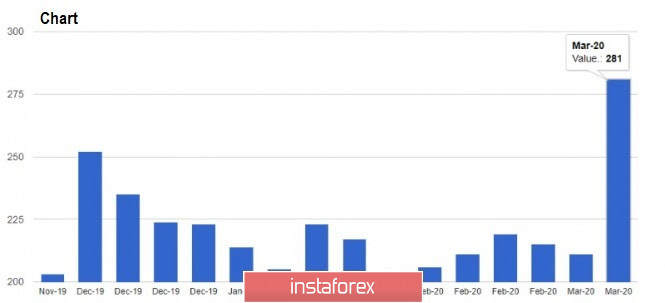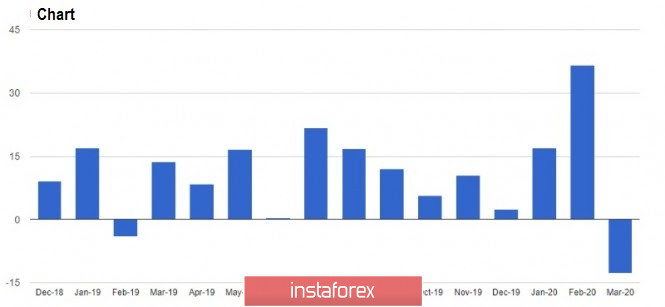Apparently, the world's central banks are beginning to compete in who will buy more bonds, what type, and in what time frame. On Wednesday, the European Central Bank announced that it is expanding its asset purchase program to 750 billion euros, which, in total, under this program, more than 1 trillion euros of securities will be purchased by the end of the year. This amount is made up of the usual monthly purchase of assets (in the amount of 20 billion euros) and the announced anti-virus tranche of purchases with a budget of 120 billion euros.

It is already clear that the volume of purchases will exceed $500 billion. Just yesterday, the Fed announced purchases worth $ 150 billion, and on Friday, another $ 125 billion. This was more than half of the assistance program. However, there was no serious reaction on the stock market, and the only positive thing that happened was the stop of its collapse. Nevertheless, as there are no buyers willing to buy at the market even at the current lows, the Central Bank will most likely need more aggressive measures to solve it. Let me remind you that the Federal Reserve recently announced that it will buy mortgage-backed securities worth at least $ 200 billion, and all the announced volumes for bond repurchase programs are in the minimum, not the maximum, as is the case in other countries.
Another news is the Fed opening temporary swap lines with other central banks in order to provide easier and cheaper access to loans in US dollars. It will be available for a period of 84 days. The Fed used a similar program in the crisis years of 2008-2009.

Yesterday, US Treasury Secretary Steven Mnuchin said that he is focusing on the liquidity for workers and businesses, and wants to provide $ 500 billion to households affected by the spread of the coronavirus. The cost of the proposed plan is: $ 1,000 for adults and $ 500 for children. The Congress will decide on this issue early next week.
As for fundamental statistics, according to the IFO Institute survey report, the expectations index in Germany fell to 82.0 points in March, from 93.2 points in February. Pessimism is observed in companies whose production is focused on exports.

According to the report of the US Department of Labor, the number of initial applications for unemployment benefits for the week of March 8 to 14 rose immediately by 70,000, and amounted to 281,000. However, the real picture will be seen after the coronavirus outbreak passes. Given the measures taken by the authorities of many countries, a slight drawdown of the labor market shall happen in the coming months. If the pandemic lasts until this summer, real problems will begin.
The current account deficit of the US balance of payments in the 4th quarter of 2020 decreased from $ 125.38 billion to $ 109.82 billion. Economists had expected it to be $ 110.0 billion.

The manufacturing activity in the area of responsibility of the Federal Reserve Bank of Philadelphia weakened in March due to the impact of the coronavirus on the country's economy. According to the data, the Fed-Philadelphia business activity index fell from 36.7 points in February to -12.7 points in March 2020.
As for the technical picture of the EUR/USD pair, it seems that the measures taken by the European Central Bank, as well as the slight stabilization in the currency market after a week-long collapse, may provide a small recovery to the risky assets. The euro rebounded from the low of 1.0650, but further growth is limited by the resistance in the area of 1.0790 and 1.0860, where active sales of the trading instrument shall be noted. To be able to resume the downward trend, the bears need to return the pair to 1.0700, which will most likely lead to a further sell-off in the area of the lows at 1.0610 and 1.0550.





















